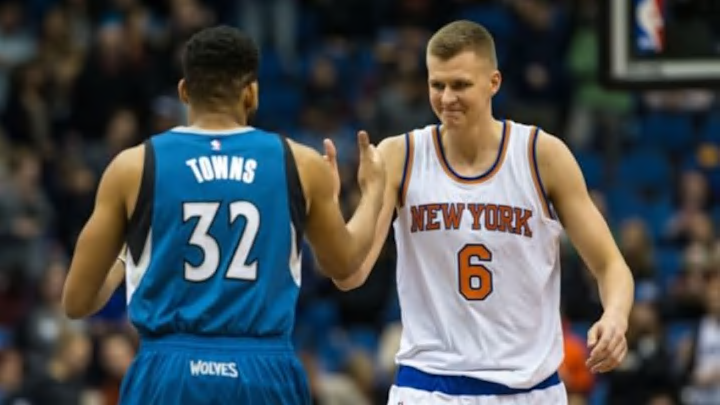
This rookie class feels like something special. SBNation just spent an entire week[1. Holy moly, is there some great content in there. Read everything.] dissecting the talent and potential of this group from every angle. At the top, there is elite talent like Karl-Anthony Towns and Kristaps Porzingis, both of whom are not just great, but position-bending bigs perfect for the direction the league is heading. There are solid role players in the middle, players like Myles Turner or Devin Booker who were supposed to be projects but could be stars sooner rather than later. Depth and breadth, this group of young talent feels like it could remake the league. So it begs the question, could this be the greatest rookie class of all-time?
Box Plus-Minus, a box scored based estimate of a player’s overall impact per 100 possessions, gives us a reasonable measure of comparison for players. The graph below shows all rookie seasons from the three-point era (beginning in 1979-80) marked by minutes played and Box Plus-Minus.

Obviously, Box Plus-Minus is a more reliable measure the more minutes a player has played. We can also see a slight upward trend — that is the better a rookie is, the more likely he is to play a lot of minutes. The minutes I used for this year’s rookie class is a simple projection based on how many minutes they had played through their team’s games Sunday night, and projected across an 82 game season. This year’s class doesn’t have anyone falling on the extreme end of the minute range, which may be more reflective of the current climate of the minute management in the NBA than any one player’s particular ability.
It’s important to remember that most rookies are not productive. Box Plus-Minus is scaled that 0.0 represents an average level of production. The minute-weighted average for all rookie seasons in this era is about -1.8, but the median rookie season in the sample is just -3.7. This year’s group has some heft at the top end, but in the aggregate it would be hard to label them as the most productive rookie class of all-time.
The graph below is a box plot dividing the rookies by season. I’ve filtered the view down to just rookies who played at least 250 minutes (or are projected to play at least 250 minutes, in the case of this year’s class.

Of the 37 rookie classes of the three-point era, this year’s group is the ninth-most productive. By minute-weighted age, they are also the youngest rookie class ever. Both averages are likely to change somewhat over the course of the year. We would expect the BPM to increase as individual players are improving over the course of the season, although this may be canceled out by more fringe rookies receiving minutes for teams that are dropping out of playoff races. For the ages, I’m just using single year ages as listed in the Basketball-Reference database so anyone who has a birthday before the end of the regular season will up the average somewhat. Still, this is clearly one of the best AND youngest rookie classes we’ve ever seen.
Age (specifically youth) is an important factor in projecting future player performance. All else being equal, between two similarly productive players, the younger player generally projects better because they are farther from their hypothetical peak performance and thus have more room to grow. The fact that this year’s class measures up well in productivity, and does so at a marginally younger age, bodes extremely well for their future. They may not be the most productive crop of rookies all-time, but at some point in the future we may very well look back on them as one of the best group of players to ever enter the league together.
